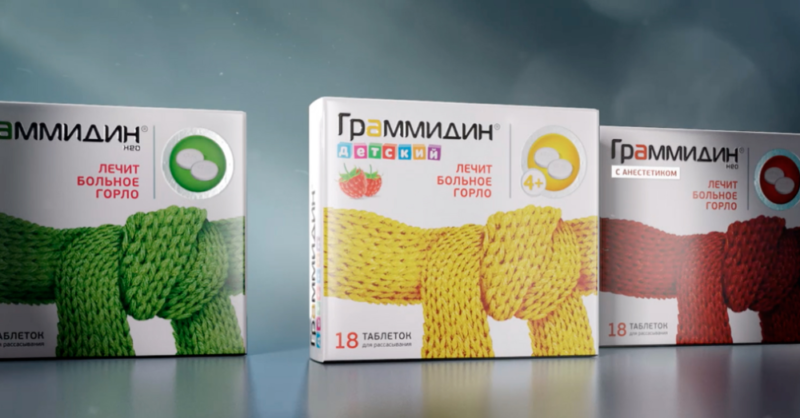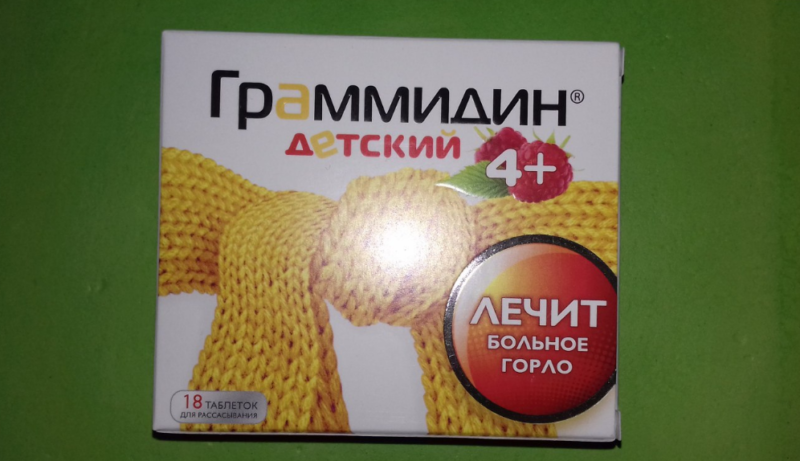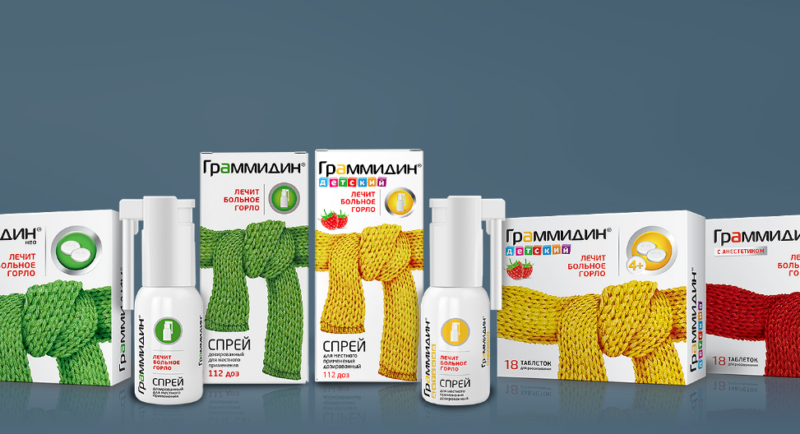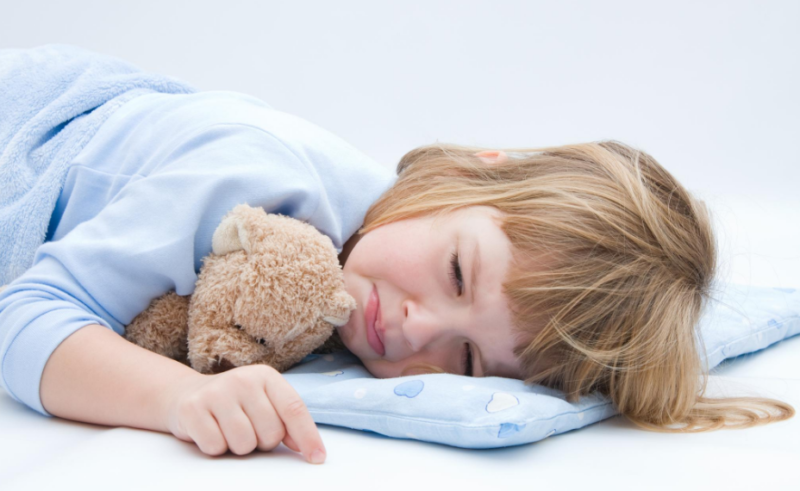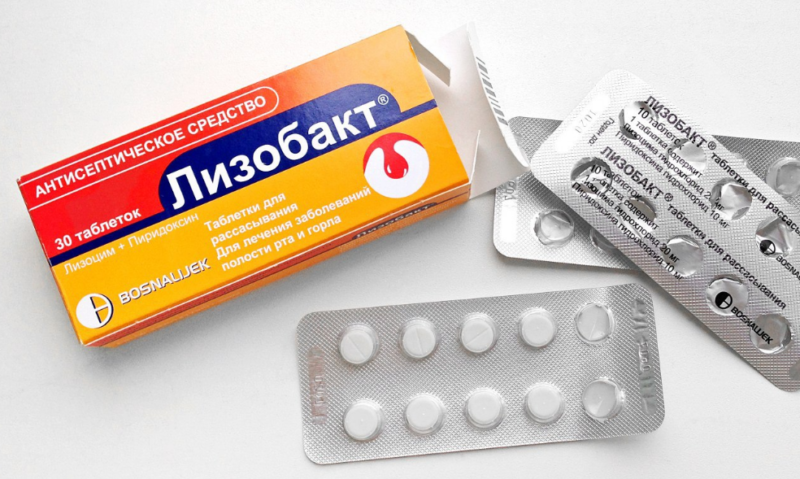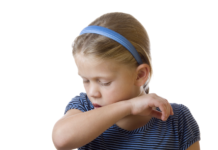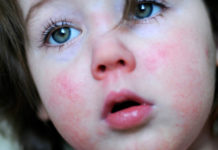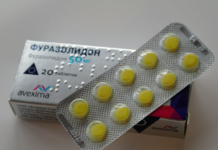Each parent inevitably, at the peak of an exacerbation of colds, is faced with the problem of selecting antimicrobial medicines for the child. A huge assortment is presented in pharmacies, choosing from which a suitable drug is not so simple. “Grammidin Children's” received quite a lot of good reviews, however, before purchasing it, you should study the information about this medication and consult a specialist.
Material Content:
Description of dosage forms and composition of the drug
"Grammidin" is a combined drug that is both an antibiotic and an antiseptic.
For children, the use of the drug in two formats is possible:
Spray
· lozenges.
The children's version of the spray has a pleasant raspberry aroma, white or transparent structure. A yellowish tinge is allowed. Aseptic solution is used for topical application. One pack of spray is designed for 112 doses. They are sealed in an aluminum bottle placed in a cardboard box.
Resorption tablets are characterized by a spray-like color and smell, as well as a round convex shape. To distinguish it from fakes, on one side there is an engraving in the form of two English letters “GR”. Doses are placed in a cellular package of 6 or 9 pieces. They are sold in cardboard boxes of 2 or 4 plates.
The composition of the agent contains two active substances - gramicidin dihydrochloride and cetylperidinium chloride.Along with them there is a list of auxiliary components:
· purified water;
Raspberry flavor
Para-hydroxybenzoic acid propyl ester;
Glycerol;
Trichlorogalactosaccharose;
· Polysorbate 80 emulsifier;
· Sodium salt of citric acid;
Nipagin;
· ethanol;
Food grade citric acid.
The tablet formulation of the drug is slightly different from the above. It contains magnesium stearate, talc and silicon dioxide, which are typical for medicines of solid forms.
Pharmacological properties
Due to the fact that the basis of the drug are two active substances, Grammidine has a double effect.
- Gramicidin dihydrochloride provides an antimicrobial effect. This is achieved due to impaired membrane stability of pathogenic microorganisms (mainly due to increased cytoplasmic permeability). A typical feature of the active substance is the local nature of the effect. In view of this, the drug is indicated for infectious and inflammatory diseases of the throat and oral cavity.
- The second component of the drug - cetylperidinium chloride has a disinfecting property. Due to its ability to prevent the development of pathogens, it can be used as an antiseptic.
Any format of children's "Grammidin" allows you to achieve the following positive effects:
- reduction in the duration of the inflammatory process;
- local destruction of microbes;
- stimulation of salivation, due to which there is an accelerated cleansing of the oral cavity and larynx;
- removal of pain.
Due to the fact that the drug affects the body locally, both active components are practically not absorbed into the digestive organs. In view of this, the presence of systemic effects is completely ruled out.
Why prescribe children's Grammidin
The drug belongs to the double pharmacotherapeutic group. It is both an antibiotic and aseptic. The main purpose of the drug is the treatment of infections of the oral mucosa and inflammatory diseases in the throat.
Indications include:
- tonsillitis (acute tonsillitis);
- gum disease (including gingivitis and periodontitis);
- herpetic and candidal stomatitis, as well as other lesions of the oral mucosa, which are non-infectious in nature;
- pharyngitis.
Due to the fact that the drug has an exclusively local effect, its use is justified only in the presence of diseases of the oral cavity. Children’s Grammidin can’t cope with infections and inflammations of other localizations.
At what age can a child be given
Absorption pills "Grammidin Children's" are allowed for use only after a child reaches 4 years of age. In relation to the format of the medication in the form of a spray, the manufacturer indicates other age restrictions - admission is possible only after 6 years. Such differentiation is due to the fact that a small fraction of ethanol is contained in the composition of the solution.
Instructions for use and dosage
The method of use of the drug depends on its format. In particular, "Grammidin Children's" spray is used to irrigate the mucous membrane of the oral cavity and larynx.
An important point: the active substances contained in the Grammidine solution have the properties of settling at the bottom. Therefore, a bottle that has just been acquired or has been used for a long time must be shaken before use.
- Children's spray can be used by children from 6 to 18 years. The recommended number of injections in one session is 4. To achieve the best aseptic effect, after irrigation of the throat it is necessary to refuse food (and preferably drink) for 1 hour. This will ensure maximum prolonged contact of the active substances with the affected areas of the mucous membrane. Processing should be carried out at least 3 times a day. The duration of the course is 1 week.
- Resorption tablets for children from 4 years old can be taken in an amount of 1 to 4 pieces per day. Dosage determination is based on the severity of symptoms and the patient's age.
If after a week's intake of the drug there are no obvious improvements, you should definitely contact a specialist to clarify the causes and nature of the disease.
In addition, it should be noted that in the presence of open wounds or ulcers in the oral cavity, the use of Grammidine will significantly reduce the rate of their healing.
Drug Interactions with Other Drugs
Due to the fact that the medicine affects the body in a place, children's Grammidin does not have any pronounced effect on the activity of other drugs. Perhaps a slight increase in the effect of other antimicrobial agents.
Contraindications, side effects and overdose
Despite the local nature of the effect on the body, in some cases, "Grammidin" should not be taken.
Contraindications include:
- initial gestational age;
- individual intolerance or the presence of allergic reactions to the components that make up the local antiseptic;
- children's age up to 4 years (in the case of a spray - up to 6 years).
Despite the almost complete absence of absorption of the active components, medical studies on the possibility of using the drug during lactation have not been conducted. Therefore, in order not to put the newborn baby at risk, it is better to choose a more suitable remedy.
In the absence of allergy to Grammidin and observing the recommended dosages, the likelihood of side effects is minimal.
If the allowable amount of the drug was repeatedly exceeded, then the following symptoms of overdose are likely to appear:
- violation of the normal process of bowel movement;
- dizziness;
- gagging.
In this case, the use of children's "Grammidine" is excluded. If necessary, you can receive enterosorbents. It is mandatory to notify the attending physician about the atypical reactions to the drug that have taken place.
Similar in composition
Before you start looking for analogues of a drug prescribed by a specialist, it should be taken into account that the risk of complications after diseases is greatly increased. If "Grammidin" was prescribed, then it means that it is he who is able to most effectively resist infection.
Among the similar drugs can be noted "Gramitsidin C".
Also, a close therapeutic effect is achieved with the following medications:
- "Askosept" (pastilles with the taste of banana or pineapple);
- Septolete;
- "Lizobakt";
- "Doctor Mom" (plant plates);
- Agisept;
- "Faringosept."
The reason for replacing the drug prescribed by the doctor can only be the presence of an allergy to the children's Grammidin. Otherwise, follow the prescribed recommendations. Not all drugs for pain and inflammation in the throat have an antibiotic effect. If a specialist considered it necessary to prescribe “Grammidin”, then the degree of mucosal damage is very extensive and you can’t do with conventional herbal medicines.


